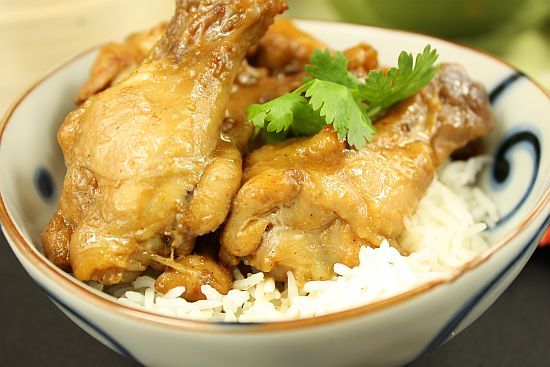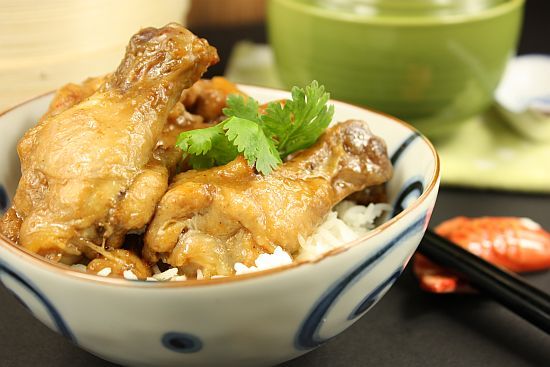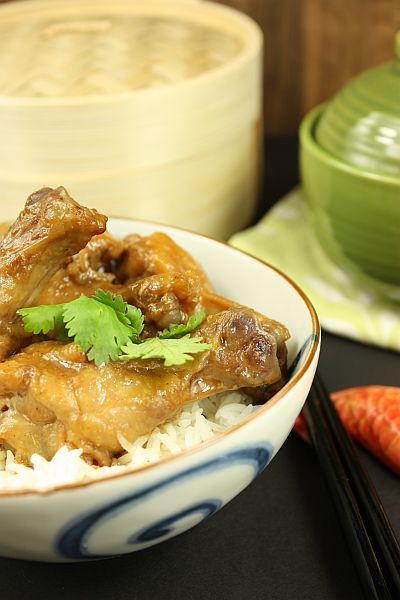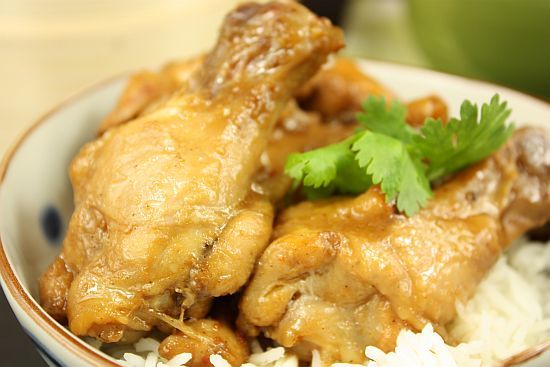
It was 10 pm on a Saturday night right after an early dinner and coffee with friends that my husband decided to take me to Mustafa. I am embarrassed to say that this is would be my 2nd trip to Mustafa even though I've stayed in Singapore for more than 15 years now.
For those who are not familiar with Mustafa, it is a 24-hour shopping mart located in a part of town called “Little India”. Why is this part of town called “Little India” you may ask. Well, Singapore first and foremost is a multi-racial and multi-cultural. Because of this, shops and eateries of different cultures will tend to predominantly operate at certain locations eg. Eu Tong Sen/Outram area is known as Chinatown, Kampung Glam/Arab Street is the Malay Muslim community and Serangoon is where you’ll find the Indian eateries and shops, thus the name “Little India”.
We also have a large number of non-professional migrant workers who come from third world countries hoping to earn a decent living here in order to support their families back home. A large percentage of these migrant workers would work in the building & construction sectors. On Sundays, which is their off day, they would congregate with their friends and fellow countrymen at various locations in Singapore, depending on the country they come from. The Indian nationale will gather at “Little India”, the Thais will hang out at Golden Mile Complex (the locals call this place “Little Thailand”) and the Burmese can be seen at Peninsular Plaza (“Little Burma”). It’s a sight to behold on weekends and usually we stay clear of these places on Sundays as it gets pretty crowded.

Shopping at Mustafa can be somewhat of a challenge especially on weekends, even more so if at night. The traffic around the area is bad and there are lots of people on the streets and inside the shopping mart. This six storey shopping space offers everything one could possibly need, from electronics and souvenirs, to clothes and fragrances. There is also a large supermarket on the second level that carries a range of food products that could rival any good supermarket, but at much cheaper prices! Mustafa attracts not only the locals but tourists as well. In fact it’s listed in some of the tourist guides which one can pick up at the airport upon arrival.
The aisles at Mustafa are narrow and because of the number of shoppers there, we had to squeeze our way around. This is certainly not a place for anyone who has a phobia of crowds or cramped areas! My mission that evening was to get some spices as I’d wanted to try my hand at cooking Briyani Chicken Rice. The recipe called for cinnamon sticks, cloves, cardoman pods, tumeric, garam masala and chilli powder. I also had to get among other items Basmati rice. We were stumped with the variety of Basmati rice being sold – I easily counted 15 types if not more. I didn’t know what to choose so my husband made the choice. His logic was the least brand of rice remaining in each rack means it’s the most popular. And it was true – we found that out when we checked out our groceries at the payment counter. Well being a man that he is, he had a smirk on his face upon hearing this.

We then headed to the spice area and I was totally blown away by the variety of spices and sauces. This is certainly spice heaven! I ended up with not only the spices I needed but other premix and sauces as well. With our shopping basket almost ¾ full, we headed towards the supermarket section. The frozen sections had 3 long open freezers for pratas, naan and leavened bread. They had so many varieties of pratas that I cannot even remember – plain prata, flaky prata, onion prata, prata filled with potato, spinach, peas, minced chicken, cheese, corn ….. We ended up loading the remaining empty space in our shopping basket with frozen pratas. By the time we finished and we only covered 2 floors it was already past 12.30am. I couldn’t believe that we had spent about 3 hours at Mustafa.
Here's the recipe for the chicken briyani rice with vegetable pickles. The recipe looks complicated but I can assure that it's really easy to prepare. I can attest to this as it's my 1st time attempting this dish.
 Chicken Briyani Rice with Vegetable Pickles
Chicken Briyani Rice with Vegetable Pickles
Ingredients for the chicken:
1 chicken weighing about 1.5kg - cut into 4 pieces, wash and drain
4 slices ginger - 1 cm each (grind to smooth paste)
4 clovers garlic (grind to smooth paste)
1 red chillie and 1 green chillie -slit halfway
4 small tomatoes, cut into cubes
3 tbsp, slightly heaped meat curry powder
2 small bundles coriander leaves - chopped coarsely
Small bunch of mint leaves
4 tbsp plain yoghurt
1 tsp pepper
Salt to taste
1 1/2 cups water
10 tbsp ghee
1 big onion - sliced thinly
1 stick cinnamon - 4 cm (ingredient for frying)
4 cloves (ingredient for frying)
4 cardoman pods (ingredient for frying)
6 almonds - scald and remove skin (grind finely)
6 cashew nuts (grind finely)
1 1/2 tbsp tomato paste
2 medium sized onions - sliced thinly and fry until golden brown
2 tbsp briyani spices (can be bought in supermarket and places that sell spices)
1 bunch of small coriander leaves for garnishing
Ingredients for rice:
600 Basmati rice
1 small tin evaporated milk
2 tsp yellow food colouring
3 tsp rose water (I couldn't find this so I omitted this in my preparation)
Method of preparing chicken:
1) Combine chicken with garlic-ginger paste, chillies, tomatoes, meat curry powder, chopped coriander leves, mint leaves, yoghurt, pepper, salt and 1/2 cup water.
2) Heat ghee in a pot then add ingredients for frying. Fry until golden brown. Add chicken and fry for a little while, turning it over a few times. Add 1 cup water and bring to a boil.
3) When boiling, lower heat, add ground almond and cashew nuts. tomato paste, fried onion slices and briani spices. Turn over chicken pieces, then leave to simmer until almost dry.
4) Remove chicken from the pot and set aside. Skim the oil from the chicken curry into a bowl and leave to cool. This pot will be used for cooking the rice.
 Method of preparing rice:
Method of preparing rice:1) Bring 3/4 of a large saucepan of slightly salted water to boil. Wash and drain rice. When water is boiling, put in the rice and boil till it is almost cooked.
2) When rice is almost cooked, remove from heat and drain off water. Mix evaporated milk with the oil skimmed from the chicken curry.
3) Into the pot used to cook chicken, put a layer of rice then a layer of chicken. Repeat till chicken and rice are used up, making sure that rice forms the last layer. Pour the oil-milk mixture over the rice.
4) Mix rose water with yellow food colouring and sprinkle over rice. Scatter a few mint leaves over rice.
5) Cook over low heat making sure the pot is well covered till steam emits from pot. Do not uncover pot while rice is cooking. To prevent rice from burning you may raise the pot higher. Alternatively this last method of cooking the rice can also be done in a rice cooker.
6) When serving, garnish rice with fried cashew nuts, raisins and chopped coriander.

Vegetable Pickles (or Acar)
Ingredients:
300g cucumbers
100 g carrots
1 teaspoon salt
2 tablespoons oil
4 slices ginger
1/2 tsp mustard seeds
1 tsp turmeric
1/2 tsp chili powder
1/2 tsp sugar
1/4 tsp salt
2 tbsp vinegar
Method:
1) Cut cucumber in half lengthwise and remove the seeds. Cut flesh into 3.5 cm juliennes.
2) Mix 1 tsp salt with cucumbers, and let sit for 15 minutes to draw out the extra moisture.
3) Cut the carrot into pieces the same size as the cucumber.
4) Heat oil in a wok and add ginger and mustard seeds, cooking until mustard seeds pop. Stir in the turmeric and chili powder, then add the vegetables, sugar, and salt and saute for 2 minutes (do not overcook, the vegetables should stay crunchy).
5) Remove from heat and mix well with vinegar. Allow the vegetables to cool in the pan, then place in a jar. Refrigerate overnight before serving.

































